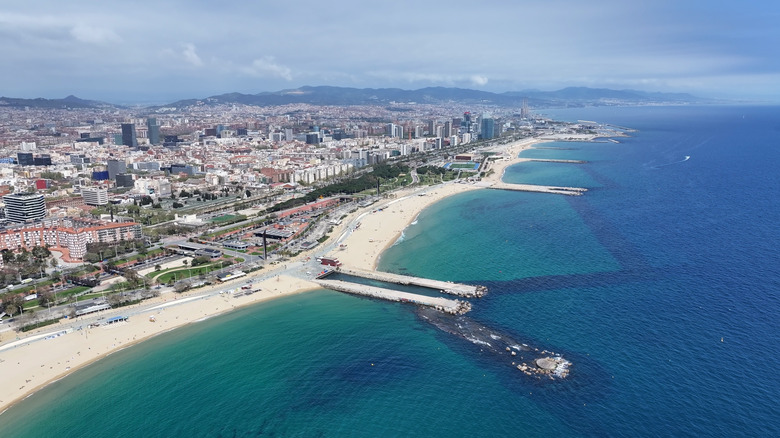Low Cost Of Living, Beaches, And Amazing Foods: This European Country Has It All
There are many factors to consider when traveling or even moving to a European country. Location and language are both likely near the top of that list, but so is affordability. And, while it might not be the most affordable country in the European Union — that title is reserved for Bulgaria — Spain falls below the average cost of living in the EU. Better yet, it also offers beautiful beaches and delicious food to boot.
According to a report by Numbeo, the cost of living in Spain is nearly 25% lower than in the United States, making it a popular destination for expats to resettle. Rent is also much less expensive in Spain, with the average monthly rent falling 43.5% lower than in America. Like with any country, expenses vary by area. But it's estimated that a family of four can live comfortably on $3,000 a month in Spain, excluding rent.
Out of the lot, Barcelona is the most expensive city to live in Spain. With rent on a one-bedroom apartment averaging about $1,900 per month, living near the city's vibrant cultural attractions will cost you a bit more. Meanwhile, outside of the city, a one-bedroom apartment can go for about $850. Prices are also typically less expensive away from major cities, and you'll find great options for a more affordable lifestyle. For varying price points, the country's many beaches are always an attractive option, too.
Sun, sand, and culture is affordable on Spain's coast
Living in Spain costs about 20% less than in many other European countries, including areas along its coast — and there is a lot of coast! In fact, Spain offers almost 5,000 miles of it, dotted with unique cultural experiences. So, while small fishing villages are a great way to escape the crowds, larger seaside towns and cities — like Gijón, in the north, and the historic town of Peñíscola, in the south — offer a much more urban way of living that's both affordable and cosmopolitan.
One of Spain's most popular swimming beaches, Playa de las Lindes, is not only picturesque, but it also has one major feature that might draw the attention of dog lovers: canine lifeguards. Located 30 miles outside of Málaga, in southern Spain, it's also near the Costa del Sol, which is a popular destination for beach bums along Spain's coastline.
It's important to remember that the Canary Islands are also part of Spain. Home to the country's volcanic beaches, the islands are split into two groups and sit 67 miles off the coast, in the Atlantic Ocean. Of course, the sandy beaches of Spain's Mediterranean are also a wonderful place to visit or settle depending on your budget.
There's much more to eat than paella in Spain
Spain is known for its Mediterranean diet, and the country has a well-earned international reputation for its food. One of the most popular dishes in the country is paella, a traditional rice dish that also traditionally includes chicken, rabbit, and vegetables. To try the best version of this cultural dish, you'll want to head to the underrated Spanish foodie city of Valencia, where it was invented.
But there's much more to Spain's culinary expertise than rice. Fresh ingredients are readily available, meaning that maintaining a healthy diet is somewhat easier than in the United States. Shellfish, fresh fruits, and potato omelets are all staples here. Of course, flavors and recipes vary by region. Pescaíto frito — which translates to small, fried fishes — is popular along the southern regions of Spain. In the north, octopus flavored with paprika, and locally referred to as pulpo a la gallega, is a familiar item on the menu. And tapas, delicious bite-sized portions, are also available throughout the country and are often paired with local wines. Jamón ibérico is also among the most popular tapas options in Spain, and involves cured Iberian meat pulled from pigs fed on a diet of acorns. Other notable mentions include patatas bravas, croquetas, and queso manchego.
Pairing Spanish food with the right wine is also key to a traditional experience. Spain uses a quality control system for its wine called Denominación de Origen, or DO, which helps direct locals and visitors alike as to which wines would be preferable. It's also a great way to determine which wines are from the very region you've found yourself enjoying a traditional Spanish meal.


